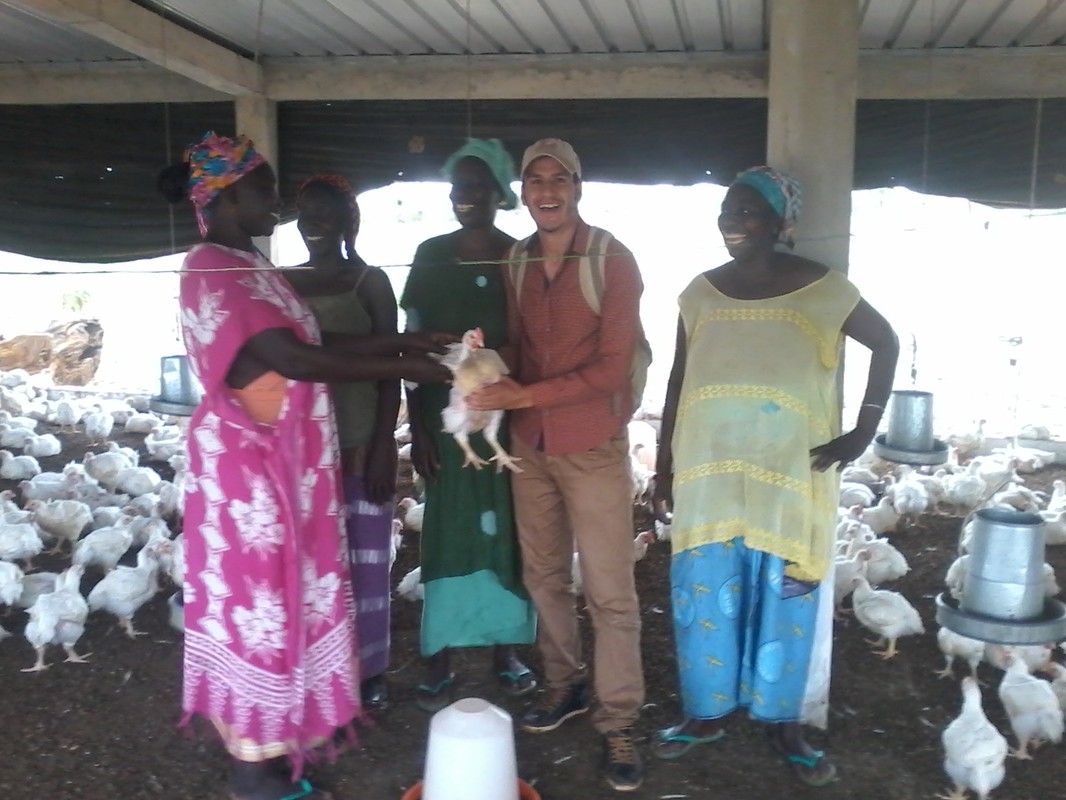Written by CorpsAfrica/Senegal Exchange Volunteer Mr. Adnane Sounni
Nowadays many philanthropists and people interested in the development discuss how raising chicken can be a solution for people who live on less than $ 2 a day. One of them is the richest person on the planet, Bill Gates. He donated 100,000 chickens to sub-Saharan African countries because he believes in what chickens can bring to fight poverty. Gates says that chickens are a good source of income because they don’t need a lot of time to raise and can be sold at a good price. Moreover, eating chickens and their eggs can solve the problem of malnutrition in underdeveloped countries as they are rich in proteins and other nutrients. Also, it’s a way to autotomize women because it may be an easy way for them to get money.
In Senegal, poultry farming is a high-yielding and consumer-oriented activity, multiplied by 10 times in less than 10 years. 10% of production is exported and the sector has a growth rate of 8% per year with and 10,000 jobs. In addition, the poultry sector benefits from assets that make projects promising; the relative ease of implementation, the ratio of output to production, income, and to employment, and the nutritional quality of products are the strong arguments that explain the willingness and motivation of communities to engage in this sector.
Also in my community- the village of Keur-Simbara- the activity of breeding chicken is fairly developed. In that village and surrounding villages as well, there are many chicken coups, and their capacity is between 200 and 1,500 chicken. A couple of year ago, a project of raising chickens was implemented in my community and the beneficiaries were the young people. With a capacity of 200 chicks, the project was run by the village’s youth association and funded by a US program called MY WORLD through Tostan. This project is an important revenue generating for the youth association of Keur-Simbara.
In fact, this project of chicken coop has been implemented in the village before two years. But, it encountered difficulties in management and profitability remained unmet. The problem was that the old committee was not active and did not do their job. It was the manager who did everything, he did not respect the instructions of management and certain expenses were not justified. So after doing the evaluation for this project, which allowed me to notice these difficulties, I started working with the youth association to find solutions. For the management we decided to relocate a management committee with very clear responsibilities. Subsequently, we thought that if we solve the management problem, the revenues will be as desired. But after we made another production band, we managed to have profits but it was not as desired.
There was another difficulty that prevents this project from being cost-effective. First, it was the state of the building. During the rainy season, the water gets into the chicken coop which can cause many problems. Lately, during the last production band, we lost nearly 50 chickens which died as the rain got into the building, and that affected the production negatively and made it hard to gain profit.
The second aspect that we should take into consideration is the capacity of the building which doesn’t exceed 200 chickens. With a profit of around $70 after selling each production, we can barely pay one person without giving any reimbursement to the other people who are involved in the management process. As a result, they lose interest in managing a project without payment. And it was one of the causes of the bad management of that project.
What’s been proposed to solve the problem?
The best solution we have found to strengthen the management of this project and also increase the profits is by increasing the production of chicken to 400 chickens. To achieve that, it is necessary to enlarge the building surface from 20m2 to 40m2. In addition to that, it is necessary to build a small store to keep chickens’ nutrition and materials, and also to buy the operating equipment that still needed.
This expansion is very important to strengthen this project. This will allow us to integrate many more young people (at least three) in the management of this chicken coop in each production instead of a single young person who manages and does everything. Then, we will ensure that the management will be effective, and also the youths of Keur-Simbara who have no work will have the opportunity to have an income generating activity. On top of that, with the profit margin, we can reward managers without difficulty. Through this strategy the project will be more profitable and the revenues of association of the young people will be increased.
Back with more details after the implementation soon; stay tuned!

